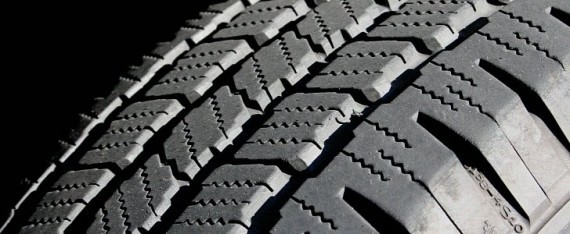 Just like with every car-related purchase, you must buy tires that fit your vehicle. However, the tricky part is getting tires that suit your needs. While the easiest thing to do is just to get the same kind of tire your vehicle has today, but replacing all of them with a fresh set of the same size, it is wise to look at all the available options.
Just like with every car-related purchase, you must buy tires that fit your vehicle. However, the tricky part is getting tires that suit your needs. While the easiest thing to do is just to get the same kind of tire your vehicle has today, but replacing all of them with a fresh set of the same size, it is wise to look at all the available options.
Evidently, with all the marketing that has been active in the segment since day one, it's hard to understand what kind of tire you need, because all of them are presented as being the best. We have a quick answer for that — the best tire in the world has not been invented, and will probably never come out of a factory. Instead, you can get the best tire for you and your car, which is where we plan to help with this article.
We have split tires by categories, and each of them will be explained to you for a better comprehension of its general description. In the EU, tires are sold with labels that provide information on the performance of each type of tire. Three criteria are placed on those tires — fuel economy, safety (braking in wet conditions), and driving noise. American standards have a “tread wear rating,” a “traction rating,” and a “fuel efficiency rating.” In both cases, “A” is the best possible value, while “E” (U.S.) and “F” or “G” (EU ) is the worst possible grade.
Evidently, you want to get tires with the highest possible values, but they will be more expensive than a mainstream brand. Keep in mind that not all of the tests will reveal just how good are some tires, so you will have to interpret the results based on the way you drive, your car, budget, and expectations.Summer Tires
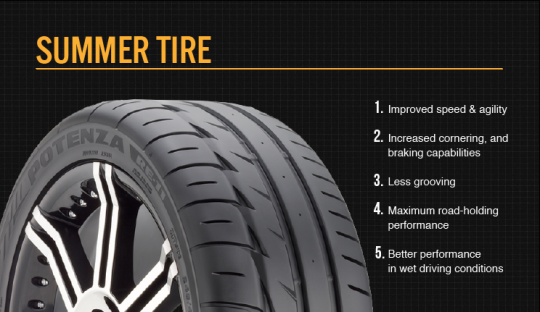 The name speaks for itself, right? You have to have these tires on your car during the summer. Why? Well, summer tires are best as long as outside temperatures do not go below 50 degrees F (10 C), and only if the place where you are driving your vehicle is not covered in ice or snow.
The name speaks for itself, right? You have to have these tires on your car during the summer. Why? Well, summer tires are best as long as outside temperatures do not go below 50 degrees F (10 C), and only if the place where you are driving your vehicle is not covered in ice or snow.
Just like with any other kind of tire, the summer variety can come with thread patterns more suitable for one activity or another. Furthermore, their composition can be extremely different from one type of tire to the other, in the way that some will provide more grip or performance, while others will last longer.
Evidently, the pricier tires tend to offer more performance, while those that are the cheapest do not offer the highest fuel economy. Instead, the most inexpensive ones tend to be the noisiest, and most of them offer poor grip and weak performance overall. With cheap tires, you are rolling the dice on the road. Get the best ones you can afford.
The most important thing about summer tires is that they are unsuitable for driving when outside temperatures fall to 10 degrees Celsius (50 F) and below. No matter their thread depth, their composition makes them too “stiff” in the winter, which will lead to uncontrollable skidding, along with the possibility of a crash.Winter Tires
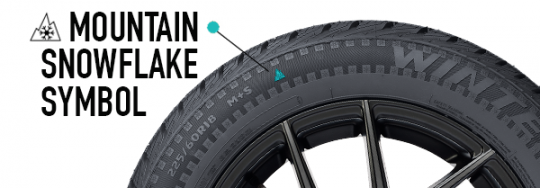 Just like with summer tires, the name of winter tires explains their purpose. These have a particular composition, mated with a different thread pattern, which makes them perform well on snow. They will also handle better than summer tires when you suddenly encounter a patch of water on an otherwise dry road, and they will give you a fighting chance on a road from an area where temperatures have come under 50 degrees Fahrenheit (10 C).
Just like with summer tires, the name of winter tires explains their purpose. These have a particular composition, mated with a different thread pattern, which makes them perform well on snow. They will also handle better than summer tires when you suddenly encounter a patch of water on an otherwise dry road, and they will give you a fighting chance on a road from an area where temperatures have come under 50 degrees Fahrenheit (10 C).
Evidently, you can get cheap winter tires, or expensive ones, and the latter will always surpass the former in performance. Before you tell us that you drive slow in the winter, you must remember that everyone must slow down while driving in poor conditions, and that is why cheaper tires will not behave as well as expensive ones. Typically, the units with better performance have a drawing on them, which depicts a snowy mountain with three peaks.
Thread depth must be monitored as carefully as it has to be with summer tires, and the same goes for their pressure, which must be set correctly for your vehicle. Driving all year on winter tires is just as dangerous as using summer tires in the snow, and this happens because the winter-proof composition of the former does not provide enough grip when temperatures rise. It is as easy as pie, but people still make this mistake across the globe. Don’t be one of them, and inform your friends and acquaintances about the topic.All-Season Tires
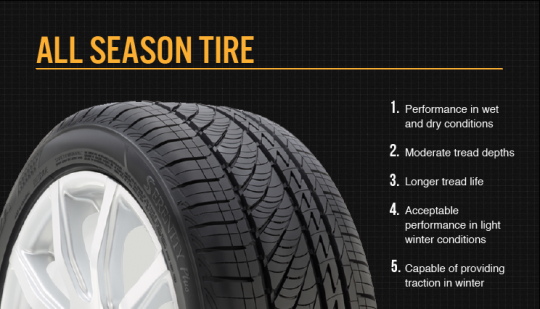 After winter and summer rubber, here comes a type of tire that appears to do both. While it is legal to use these all year round, even in countries where snow tires are mandatory in the winter, it is wise to stay clear of them if you want the best possible performance from your vehicle in any season.
After winter and summer rubber, here comes a type of tire that appears to do both. While it is legal to use these all year round, even in countries where snow tires are mandatory in the winter, it is wise to stay clear of them if you want the best possible performance from your vehicle in any season.
An all-season tire is usually one with a thread pattern that looks like one for a winter tire, and you need it to have “M+S” written on the sidewall (usually, next to the size designation) to be sure they are legal in countries where snow tires are mandatory in the cold season. Their compound is also closer to that found on winter tires, but a compromise has been made to allow reasonable performance in the summer.
You must note that all-season tires will be louder than the average summer tire during the warm season, and that they will be outperformed in almost every condition possible by specialized rubber. Evidently, they come with an advantage — you do not buy two sets of tires for a vehicle, but the problem is that they cannot match the performance of either specialist tire. However, a pair will be better in the snow than driving on summer tires, but get winter ones if you have a choice. These also come with a longer thread life.All-Terrain A/T or M/T Tires
The H/T type is meant for longer thread life and highway driving. It can handle light off-roading, but mud/sand/dirt will get into its threads, and you will get stuck if you go off-roading in the rain with these. If your pick-up truck or SUV never leaves the road, these are the best ones for you.
The A/T kind of tires is a solution that is more capable in off-road conditions, with decent performance on the road. Evidently, the grip will decrease on the tarmac, and braking performance will be affected. You can recognize these by their larger “blocks” in their thread, instead of the continuous lines found on the H/T ones.
The third type of specialist tire for pickup trucks and SUVs is the M/T, which is the most aggressive road-going model for this kind of vehicle. These will perform at their best in the mud, dirt, and general off-road conditions. They will be noisy on the road, and stability will not be as high as it could be with the two types of tires described above. Make sure your A/T, H/T, or M/T tires are suitable for the winter by checking for the “M+S” designation on their side walls, which stands for Mud+Snow.Low-cost and Premium Tires
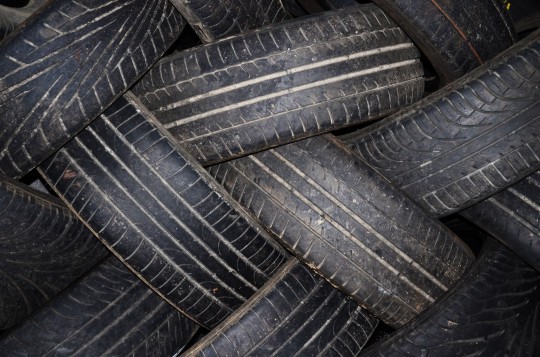 With every product category in this world, there are options for all budgets (almost). The most affordable tires have to make compromises in their composition or design to allow a lower acquisition cost. Getting new tires is better than driving on old ones, but do your best when buying them, because you might be disappointed by the result of skimping out when purchasing tires.
With every product category in this world, there are options for all budgets (almost). The most affordable tires have to make compromises in their composition or design to allow a lower acquisition cost. Getting new tires is better than driving on old ones, but do your best when buying them, because you might be disappointed by the result of skimping out when purchasing tires.
Just like in other categories of consumer products, there are also mid-range products, which come with fewer compromises, but are not the most high-performing on the market. Those are the ones that you should get if your budget is tight.
When brands are concerned, the premium ones are also the most familiar to most petrolheads: Continental, Michelin, Goodyear, Pirelli, Dunlop, and Bridgestone. Mid-range brands include Avon, BFGoodrich, Cooper, Falken, Firestone, Fulda, Kumho, Hankook, Marangoni, Metzeler, Maxxis, Nokian, Nexen, Vredestein, Uniroyal, Yokohama, and Toyo.
The economy brands are not as familiar to all, but they include Achilles, Debica, Dmack, Federal, Kleber, Kormoran, Matador, Nankang, Nitto, Riken, Sava, Semperit, Tigar, and others. You can get even cheaper tires, and brand names include Goodride, Jinyu, Petlas, Sailun, and many others.
Evidently, each brand has more affordable products in its range, along with mid-range offerings, and its premium lines. Remember that the most expensive tire from a budget brand might not be as good as an average one from a premium brand. Before purchasing tires, search for reviews of that brand online, and find out if other clients are complaining about quality, excessive wear, or other problems.
We advise buying the best brand and type of tire you can afford, with the condition that the selection should be easy to find in your area. Why is that? Because you need to be able to get a replacement easily if you get a flat, and you might not get eccentric brands that easily.








